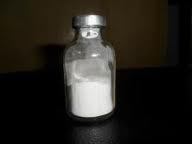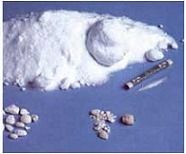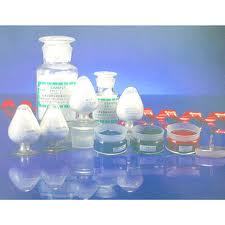Sodium Citrate
25.00 - 50.00 INR/Kilograms
Product Details:
- Molecular Formula Na3C6H5O7
- Storage Room Temperature
- Melting Point 300C
- Molecular Weight 58.06 g/mol GSM (gm/2)
- Medicine Name Sodium Citrate
- Type Pharmaceutical Intermediates
- Grade Medicine Grade
- Click to View more
X
Sodium Citrate Price And Quantity
- 25 Kilograms
- 25.00 - 50.00 INR/Kilograms
Sodium Citrate Product Specifications
- Medicine Grade
- Sodium Citrate
- Pharmaceutical Intermediates
- Na3C6H5O7
- Powder
- 58.06 g/mol GSM (gm/2)
- 300C
- 98%
- Room Temperature
Sodium Citrate Trade Information
- Cash in Advance (CID) Cash Advance (CA)
- 1000 Kilograms Per Day
- 7 Days
- Australia North America Eastern Europe Middle East Central America South America Western Europe Asia Africa
Product Description
Sodium Citrate serves as a urine alkalinizer. Bicarbonate is produced after it is absorbed. Treatments for metabolic acidosis use the generated bicarbonate to buffer excess hydrogen ions in the blood and raise its pH.
Properties:
- Name: 1,2,3-Propanetricarboxylicacid, 2-hydroxy-, sodium salt (1: 3)
- Superlist Name: Sodium citrate
- CAS No.: 68-04-2
- Formula: C6H5Na3O7
- Molecular Weight: 258.08
- Deleted CAS: 183748-56-3|8055-55-8|856354-90-0
- Synonyms: 1,2,3-Propanetricarboxylicacid, 2-hydroxy-, trisodium salt (9CI); Citrosodina;Citrosodine;Cystemme;Ional;Natrocitral;Sodium citrateanhydrous; Citric acid, trisodium salt (8CI);Sodiumcitrate (Na3C6H5O7) (7CI);331iii;Citnatin;Citra-lock;Citreme;Trisodium citrate;Unifine P 3;
- EINECS: 200-675-3
- Density: 1.008 g/mL at 20 C
- Melting Point: 300 C
- Boiling Point: 309.6 C at 760 mmHg
- Flash Point: 155.2 C
- Appearance: White to off-white crystalline powder
- Risk Codes: 22-40-48/20/22
- Safety Description: 36-24/25
How does it work?
It has a sour taste like citric acid. Its medical use is as an alkalinizing agent. The agent neutralizes excess acid in the urine and blood. Metabolic acidosis can be treated with it.
Applications Or where it is used:
Sodium citrates are emulsifiers for oil and acidity regulators that are added to food and drinks. When added to cheese, they prevent it from becoming greasy. They also prevent food from becoming acidic. The clotting of donated blood in storage is prevented by sodium citrate.
Manufacturing process:
An ordinary method for preparing sodium citrate is to add sodium carbonate monohydrate to a warm aqueous 5 solution of citric acid. After evaporating the solution, the crystals are formed. Calcium citrate can also be converted into sodium citrate by decomposing it with an alkali metal salt.
How to use:
Each time you use the container, shake it well. By mouth, usually 4 times a day, or as directed by your doctor.
Dosage of usage:
- Dosage Forms and Strengths
- Sodium citrate/citric acid (1 mEq sodium equivalent to 1 mEq bicarbonate)
Oral Solution
- (490mg/640mg)/5mL
- (500mg/334mg)/5mL
Dosage Considerations Should be Given as Follows:
- Urine Alkalinization, Prevention of Nephrolithiasis
- Adults: 10-30 mL mixed in up to 6 oz water/juice orally post meals and at bedtime as required
- Children 2 years and older: 5-15 mL mixed in 30-90 mL of water/juice orally post meals and at bedtime as required
- Children under 2 years: Based on physician's discretion
- Follow with additional water if required
Side effects of sodium citrate/citric acid include:
- Diarrhea
- Vomiting
- Stomach pain
- Nausea
- Muscle spasms
- Metabolic alkalosis
- Fluid retention
There may be additional side effects not mentioned in this list. Consult your doctor for more information.
Warnings and precautions while using this product:
- Kidney failure
- Severe heart damage
- Addison's disease
- High levels of potassium in your blood
- If you are severely dehydrated
Tell us about your requirement

Price:
Quantity
Select Unit
- 50
- 100
- 200
- 250
- 500
- 1000+
Additional detail
+91
Email










 : nilesh.sheth70
: nilesh.sheth70
